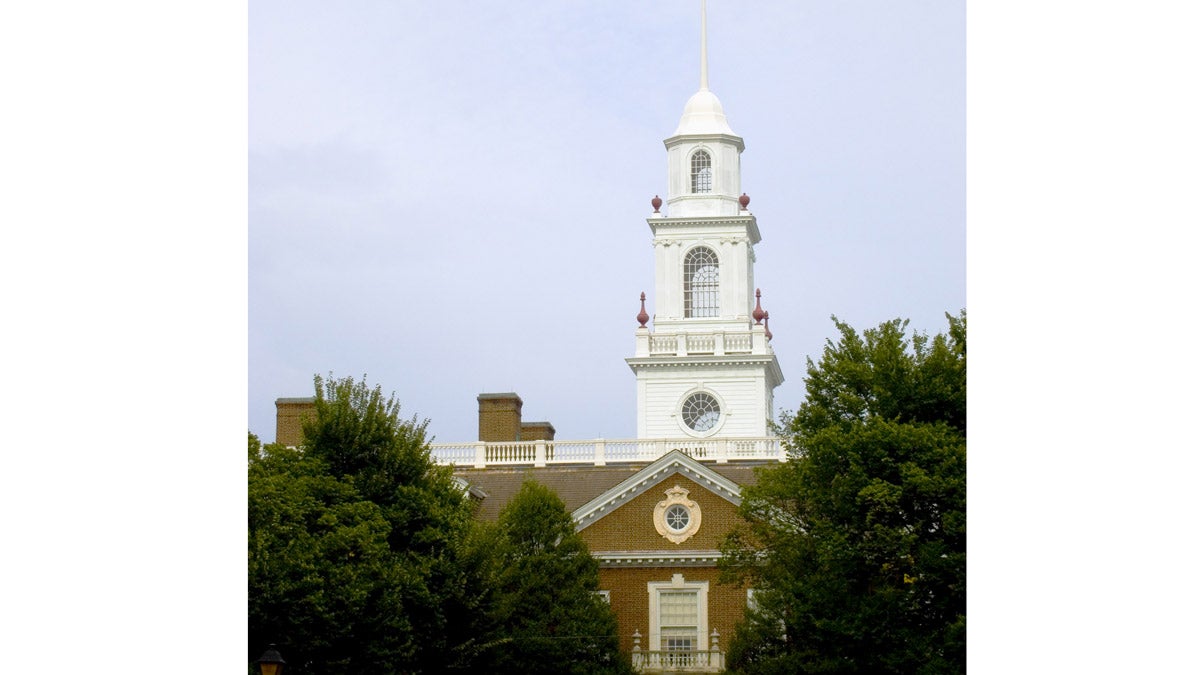As historic school redistricting plan passes Delaware House, attention turns to Senate

Lawmakers in the Delaware House have passed a measure that would allow redrawing Wilmington's school district lines consolidate four districts into three. (Teresa Levite/Bigstock) reduce ttiap
The Delaware House approved a measure Wednesday to redraw school district lines in Wilmington for the first time in more than three decades.
There are still many hurdles to clear before the redistricting plan can take effect, but Wednesday’s vote guarantees the complicated and politically fractious proposal will live another day.
“There’s an old adage that says the race does not go to the swift, but the one who endures,” said Tony Allen, co-chair of the citizen’s commission that crafted the redistricting plan. “This race started 62 years ago, and it’s not finished yet.”
The bill garnered no Republican support and passed by a 23-16 margin. But pass it did, meaning the proposal now heads to the state Senate.
Wednesday’s vote is the latest milestone in a historic effort to repair Wilmington’s ailing schools. That effort is sprawling, but much of the public attention has focused on a redistricting proposal contained in the larger plan to consolidate Wilmington’s four school districts into three.
Historic implications
To understand the significance of that move, a short history lesson is in order.
Following a court desegregation order, Delaware leaders crafted four largely suburban school districts in the early 1980s — each with its own chunk of Wilmington students. The aim was to integrate schools in Delaware’s largest and northernmost county. To that end, the arrangement largely worked.
In the intervening, years, however, complaints swelled about the long distances traveled by city students and the bureaucratic disarray created by dividing a city of 70,000 residents among four primary school districts.
Last year, the state Legislature created a 23-member body called the Wilmington Education Improvement Commission, known as WEIC, and asked it to craft, among other things, a redistricting proposal. That proposal came out last winter and narrowly passed the State Board of Education in March.
If enacted, the WEIC redistricting plan would take the Christina School District — a noncontiguous district that represents Newark, Delaware and a largely poor section of Wilmington — and remove it from the city.
Christina’s share of Wilmington students would be transferred to the neighboring Red Clay School District, and Red Clay would become the city’s majority school district. The Brandywine School District and Colonial School District would continue to educate smaller shares of Wilmington students.
Under the current plan, that reconfiguration would happen at the dawn of the 2018-19 school year. But there’s a lot to be worked out before then.
Battle brewing over money
First, the state Senate must confirm the plan, and Delaware Gov. Jack Markell has to sign on. Then there’s the question of money.
Public objections to the redistricting proposal largely revolve around how to pay for it. Some worry the shift will overburden taxpayers in the Red Clay School District because it will increase the district’s share of low-income city students. Republican legislators who represent Red Clay residents voiced sharp opposition Wednesday.
“There is going to be a cost associated with any changes,” said Rep. Joseph Miro, R-Pike Creek Valley. “Red Clay, the district I represent, is going to have to absorb some changes. I’m talking about monetary changes. I’m talking about money.”
Miro speculated the cost would be passed off to Red Clay taxpayers. Either that, or the plan would be implemented poorly.
“To maintain the promises that are being made is going to cost money,” said Miro.
Partly in response to those concerns, WEIC has recommended the state pilot a new funding formula that would steer extra state dollars to students in the affected districts who are low-income or English language learners. The logic is that such students are more expensive to educate because of the built-in challenges they often face.
WEIC wants, at minimum, $7.5 million in each of the first two years of its redistricting plan to support the new funding formula. Markell has budgeted $6 million for WEIC and that figure is unlikely to climb higher since the latest state’s revenue projections are more pessimistic than expected.
WEIC has the power to suspend the plan if the state doesn’t provide what it considers “necessary and sufficient” funding. Allen, the WEIC co-chair, reaffirmed his group will exercise that right if the state legislature doesn’t provide at least $7.5 million.
“At the heart of our plan is equitable funding for all students,” said Allen. “We will not back down on that issue. And it is the thing that we need to move this plan forward.”
Pledging to fight on
Should WEIC halt the plan, it will set the stage for another funding showdown next year or possibly even the year after. The wording of the resolution passed Wednesday allows WEIC to continue asking for more money until 2018, after which the redistricting plan would dissolve.
“House Joint Resolution 12 allows us the opportunity to continue on and fight another day, which is what we intend to do if the money is not there,” said Allen
The Delaware House also passed a bill Wednesday clarifying that its approval of the WEIC redistricting plan doesn’t commit the state to funding the plan. That clarification allowed House leaders to rally necessary support for the proposal. It also allowed them to dodge the money questions raised by Republican skeptics.
“This resolution is pretty obvious and we’ve stated it over and over again. There’s no money attached to it,” said Rep. Valerie Longhurst, D-Bear.
Wednesday’s vote went along party lines with one exception. Rep. Kim Williams, D-Newport, voted against the measure. Williams represents part of the Red Clay School District and is a former member of Red Clay’s board of education.
“I heard from many, many, many of my constituents … telling me they did not support the proposal,” said Williams.
Early indications are that the redistricting resolution could face even stiffer opposition in the state Senate. Advocates, however, were undeterred.
“Since we started last year, at each step, everybody has said this plan is gonna die,” said Allen. “But we believe there’s no replacement for hard work, and we plan to do a lot of hard work with the Senate next week.”
“There’s work to be done,” admitted Rep. Charles Potter Jr., the resolution’s lead sponsor. “And that’s what’s gonna happen. We’re gonna keep working, keep working. We’re never gonna stop. We’ve got to get this done.”
Potter also took a moment to celebrate the historic implications of the moment. School district lines in New Castle County have been the source of turmoil and litigation for over half a century. A case based in Delaware eventually became part of the Brown v. Board of Education Supreme Court decision that barred racial segregation in public schools. Later court decisions forced local leaders to redraw district lines in a way that facilitated increased racial integration and mandated busing.
WEIC leaders and supporters hope they can forge the first legislative plan to change district boundaries in decades.
“This has been a long time coming,” said Potter.
WHYY is your source for fact-based, in-depth journalism and information. As a nonprofit organization, we rely on financial support from readers like you. Please give today.





